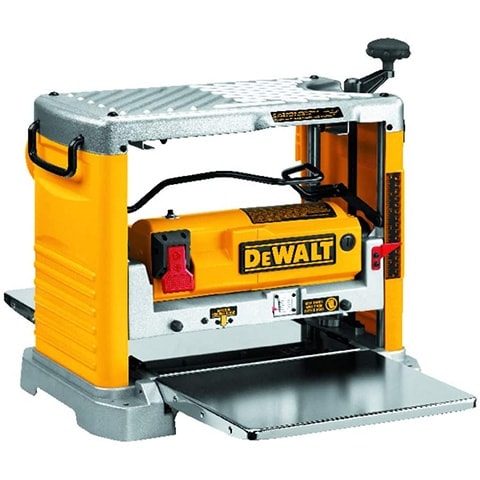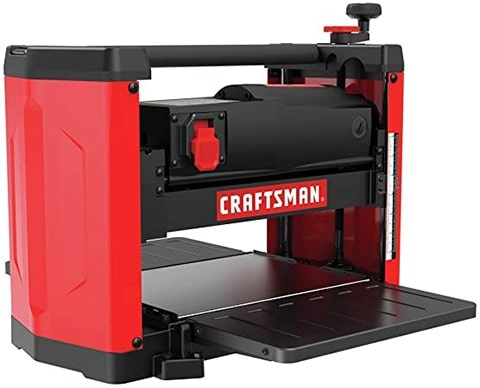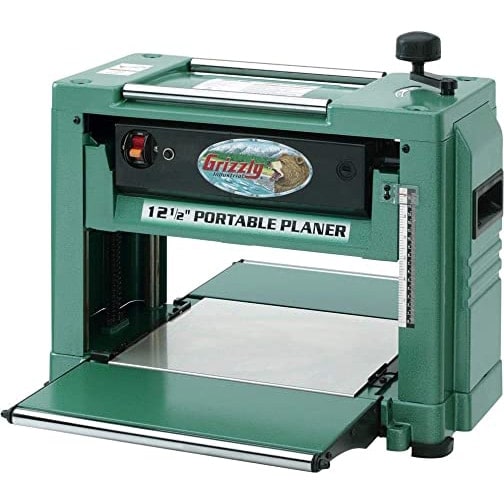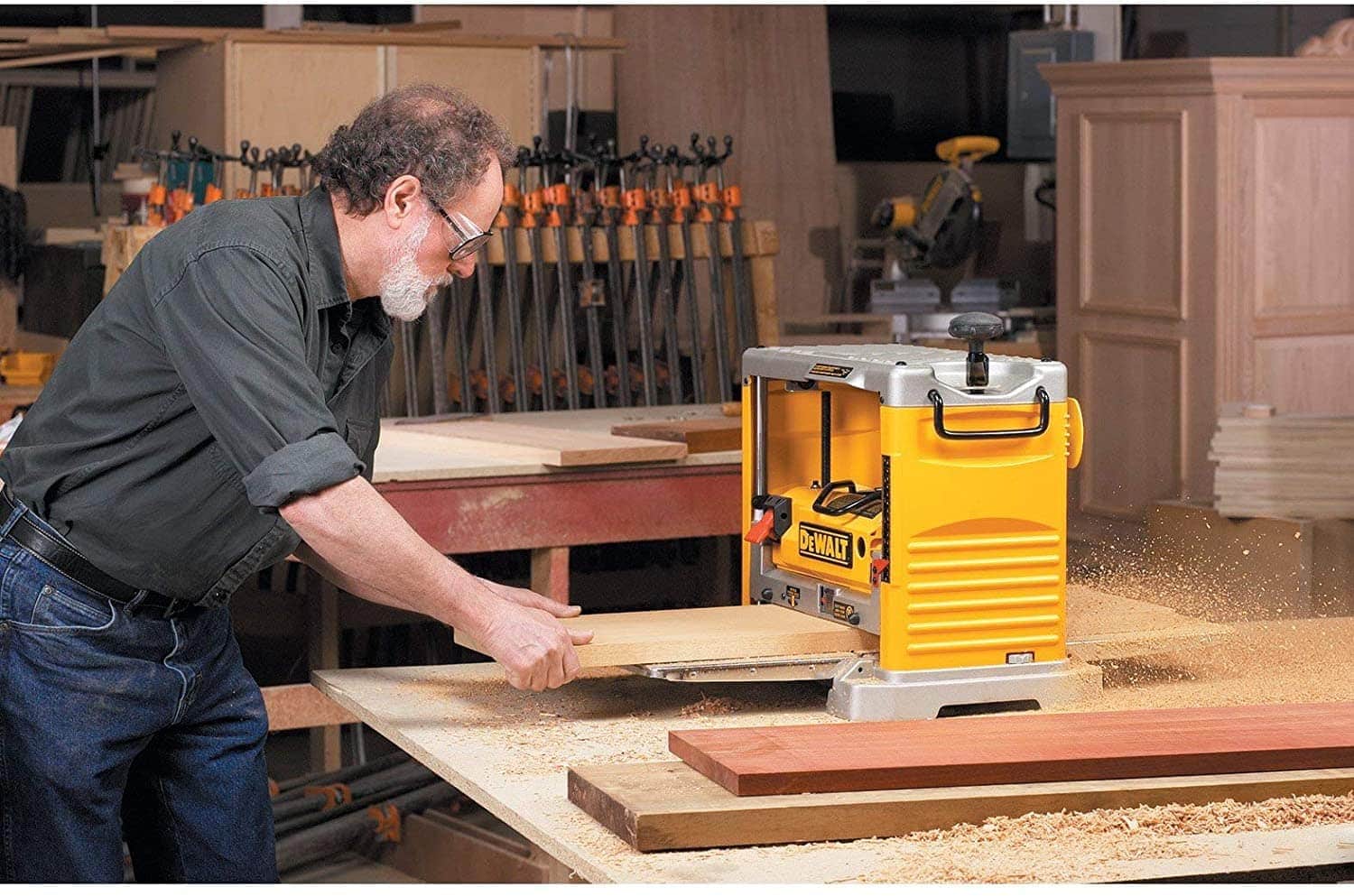5 Best Budget Planers under $500 of 2025 – Top Picks & Reviews
-

- Last updated:
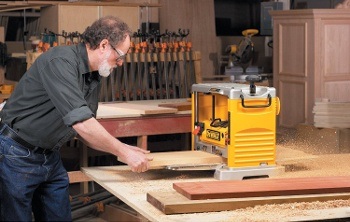

Planers are extremely versatile tools that should be a part of every woodworker’s tool collection. They can resize and refinish wood, turning unusable, rough lumber that’s the wrong size into usable wood that fits right and has a smooth surface.
Stationary planers are very expensive and typically cost close to $1,000. This price is hard to justify for the average hobbyist or even many professionals. However, budget planers are portable, more affordable, and still very capable tools.
We needed to replace our decades-old planer, so we decided to see what was available. After testing and comparing many machines, we settled on five that we want to share in the following reviews. These were our favorites, but two of them stuck out as top picks, and we’ll make sure to revisit them at the end so they’re fresh in your mind.

A Quick Comparison of Our Winners in 2025
| Rating | Image | Product | Details | |
|---|---|---|---|---|
Best Overall

|
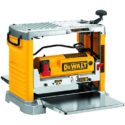
|
DEWALT Benchtop Planer |
|
CHECK PRICE |

|

|
WEN 6550T Corded Benchtop Thickness Planer |
|
CHECK PRICE |

|

|
CRAFTSMAN CMEW320 Benchtop Planer |
|
CHECK PRICE |
|
|

|
Porter-Cable PC305TP Benchtop Planer |
|
CHECK PRICE |
|
|

|
Grizzly Industrial G0505 Benchtop Planer |
|
CHECK PRICE |
The 5 Best Budget Planers under $500
1. DEWALT Benchtop Planer – Best Overall
DeWalt is one of the leading names in power tools, and once you use the DW734 Benchtop Planer, you’ll know exactly why. This machine is a beast in a compact form. It’s small enough to fit on any bench or table but still heavy enough to stay put at 80 pounds. But where this planer really shines is its performance.
This machine has a three-knife cutting head, giving you more cutting surface than other planers. The cutter heads spin at 10,000 RPM, allowing them to create an impressive 96 cuts per inch. This results in an extremely fine finish that’s ready to go; no sanding is needed. We haven’t found any competing planers that create such a fine finish.
As you push your material through, you’ll be thankful for the extended tabletops providing 33.5 inches of total material support. And with a powerful 15-amp motor spinning the cutter heads, you’ll never hear the machine slow down, even when cutting at capacity. Speaking of capacity, this machine can plane boards up to 12.5 inches wide and 6 inches deep. Granted, this machine is a bit more expensive than the competition, but its stacked feature set warrants the extra cost and makes it our best budget planer available this year.
- Performs 96 cuts per inch for a very fine finish
- 10,000 RPM cutter head speed
- 5 inches of material support
- Powerful 15-amp motor
- Can handle boards up to 12 inches wide
- More expensive than many competing models
2. WEN 6550T Corded Benchtop Thickness Planer
You don’t even have to touch the WEN 6550T Corded Benchtop Thickness Planer to see that it’s a high-quality machine. It looks solid, and once you get your hands on it, you won’t be disappointed. The WEN has a heavy-duty base that keeps it firmly in place during use, and one of the nicest features is the non-marring granite tabletops that support your material. They slide easily and won’t damage any wood.
Like most of the planers we tested, this one is equipped with a 15-amp motor that produces enough power to plane wood up to 12.5 inches wide and 6 inches thick. The cutter heads make a total of 17,000 cuts per minute, which equates to a feed rate of 26 feet per minute. However, we noticed that it slowed down quite a bit when we were using large cuts of hardwood.
The dust port on this device is fan-assisted. We were surprised at how effective it was since our area was practically dust-free when we finished working. But we did discover an issue with the blades. After just a few boards, one of the blades got nicked and started leaving a groove in our wood.
- The granite table is sturdy and non-marring
- 12-inch width capacity and 6-inch height capacity
- 15-amp motor makes 17,000 cuts per minute
- Dust port is fan-assisted to keep your workspace clean
- 26 feet per minute feed rate
- Has a hard time with hardwoods
- The blades are weak and easily damaged
3. CRAFTSMAN CMEW320 Benchtop Planer
The CRAFTSMAN CMEW320 Benchtop Planer isn’t the most powerful budget planer we tested, but it’s still a capable device. The cutter heads spin at 8,000 RPM, allowing for 16,000 cuts per minute. This was noticeably slower than the DeWalt or the WEN unit, but the CRAFTSMAN still produced clean surfaces that were straight and parallel, which is what really matters.
Right out of the box, the tables on this machine weren’t level. We had to play with them a bit to get them to sit right, but once adjusted, we had no more trouble with them. We noticed a lot of play in the height adjustment handle, however. It didn’t seem to have much effect on our boards, but it just doesn’t inspire confidence in this tool.
Still, there were other traits we liked about this planer. For instance, the knives are made of high-carbon steel, and they’re reversible. They won’t go dull quickly, but when they do, you can simply turn them around, and you’ll be good to go. We also liked the vacuum port that allowed for effortless dust collection. However, those features weren’t enough to help the CRAFTSMAN overtake its stiffest competition.
- 8,000 RPM cutter head makes 16,000 cuts per minute
- Reversible knives are made from high-carbon steel
- Dust collection port with vacuum attachment
- Tables weren’t level from the factory
- There’s noticeable play in the height adjustment handle
4. Porter-Cable PC305TP Benchtop Planer
We’ve had good luck with many Porter-Cable tools in the past, but the PC305TP Benchtop Planer wasn’t one of our favorites. It’s still a great tool, but it’s outperformed by the competition in many areas. However, the 3-year warranty that protects this machine is hard to beat.
Like most of the budget planers we tested, the Porter-Cable has a 15-amp motor. It handles hardwoods with no problem and can even plane glued materials. The cutter heads only spin at 8,000 RPM, allowing for a feed rate of about 26 feet per minute. It has a 12.5-inch width capacity and a 6-inch height capacity, keeping it on par with much of the competition.
However, the Porter-Cable fell short in a few key areas. First, it vibrates excessively to the point that the machine actually moves. That is also probably part of why the height adjustment keeps migrating and changes the depth of the cut after a few passes. Our final complaint is that the support tables are too short. You’ll need to add some support at the outfeed for your board to rest on as it comes out of the planer.
- The stout 15-amp motor handles hardwood easily
- Protected by a three-year limited warranty
- Can even plane glued materials
- Needs a longer support table
- Creates excessive amounts of vibration
- Height adjustment continues to migrate
5. Grizzly Industrial G0505 Benchtop Planer
Grizzly is known for making some seriously stout powerhouse tools, but their G0505 Benchtop Planer missed the mark. However, it has a few impressive specs. First, it has a powerful motor that’s pushing two horsepower. All that power results in a rapid feed rate of 32 feet per minute. The cutter heads spin at 10,000 RPM, matching the DeWalt that was our top pick.
But to get those specs on the Grizzly costs a lot more than the DeWalt, and it falls short in other regards. For example, the Grizzly planer only manages 52 cuts per inch, which is a much rougher finish than the 96 cuts per inch you get with the DeWalt. We also noticed that the motor didn’t perform as well as expected. It produces a slight burning smell like it’s being overworked, even when not used to capacity.
Unfortunately, we found more drawbacks. The Grizzly wouldn’t hold the dimensions we set. So, after a few passes, we had to keep readjusting and resetting the proper dimensions. Even the blades were lackluster. After just a few passes, one of them started cutting nick lines into our wood.
- Powerful 2-HP motor
- 32 feet per minute feed rate
- 10,000 RPM cutter head
- More expensive than competitors
- Only provides 52 cuts per inch
- Doesn’t hold the dimensions you set
- The motor produces a burning smell like it’s overworked
- The blades created nick lines in the wood
Buyer’s Guide – How to Choose the Best Budget Planer
At this point, you could simply go out and purchase one of our top picks and start working on your next project. But if you’re wondering how we compared these machines and which factors played into our choices, this short buyer’s guide is for you. In it, we’ll discuss the most critical aspects that you should consider to ensure you get the planer that’s perfect for you.
Power
Planers are asked to cut the top and bottom of a long piece of lumber to change the dimensions while keeping the edges straight and parallel. That requires blades on the top and bottom with enough power to keep them spinning without bogging down, even on hardwoods. If you attempt to run a board through your planer and the motor starts to slow down, you will be disappointed.
Hardwoods and larger woods are harder for a planer to deal with. If you know you’ll be working with many oversized boards that will push your planer’s capacity to its limits, you’ll want to find one with a strong enough motor to handle all the wood.
Likewise, if you work with hardwoods a lot, power will be even more essential since hardwoods are more difficult for the motor to push through.
Capacity
Capacity refers to the size of lumber that you can use with your planer. If you need to work with huge boards, you might need to upgrade from a benchtop planer. Most of these tools are limited to working with wood that’s under 12.5 inches wide and 6 inches deep.
Cuts Per Inch
The cuts per inch rating on planers have a very noticeable effect on the finish of your wood. If you only do rough construction, this might not matter to you as much. But if you want your boards to come out of the planer ready to be used in a finished project, you’ll want to find a planer that can produce as many cuts per inch as possible. The more cuts per inch a machine can produce, the cleaner the finish of the wood will be.
Our favorite planers could produce as many as 96 cuts per inch, while others could barely muster 50. Obviously, that will create a glaring difference in the finish of the face of the wood.
Feed Rate
The Feed rate is how much lumber your planer can plane in a minute. On average, most machines could plane wood at about 26 feet per minute. Some of the more powerful units could manage as much as 32 feet per minute but with fewer cuts per inch.
If you take on large projects that require you to plane many pieces of lumber consecutively, the feed rate will likely be important to you. A slower feed rate means it will take much longer to prepare all your lumber before starting on your project.
Support Tables
As you guide the lumber through your planer, it will be supported on a tabletop. The tabletops extend to the front and rear of the machine, providing support to help prevent sniping. When you push a longboard through the planer, if you imagine the far end not being supported, it goes down, lifts the end in the planer, and causes an uneven cut. That is called sniping.
Longer support tables prevent sniping, but if you’re working with long enough material, you’ll probably have to improvise some sort of support on your own.
There’s one more thing to consider with support tables: the material they’re made of. Most of them are made of metal, which works well. But we liked the granite table we found on one of the models we tested. It never marred the wood and was very smooth with our lumber gliding on top of it.
Dimension Retention
Once you set your planer to cut to a specific size, you don’t want that measurement to move. But not all planers are as sturdy as they should be. Some that we tested needed readjusting every few passes because they kept migrating out of place, changing the dimensions of our boards.
Stability
While pushing your boards through the planer, the last thing you want is the planer moving with your boards. The machine needs to stay completely still and stable. To that end, many planers include heavy-duty bases that keep them firmly planted where you set them up. However, others were less stable and had vibration issues that would cause them to migrate. This is incredibly frustrating and can result in a lot of lost time.
Warranty
If something happens, you’ll want a warranty to protect your investment. Planers aren’t cheap tools, even though we’re examining the lowest-priced planers on the market. The warranty can provide peace of mind, ensuring that if anything goes wrong with your planer in the first few years, you’ll be able to replace it without having to fork over the funds for a new one.
More buying guides like this:
- A closer look at the best benchtop planers on the market
- A closer look at wood planers in general – Which are our top 5 picks?
In Conclusion
Many great planers are on the market, but only a handful are priced below $500. We wanted to make sure that we found the absolute best options available, and after testing them all thoroughly to write our reviews, we think the mission has been accomplished.
For us, the obvious choice is the DeWalt DW734 Benchtop Planer. This robust machine is packed with power, 15 amps of it. All that power allows the cutter head to turn at 10,000 RPM while performing 96 cuts per inch. This results in the finest finish we’ve seen from a budget planer. Plus, you can use the Dewalt with lumber as large as 12.5 inches wide and 6 inches thick.
If you’re looking for something that’s even more budget-priced than the DeWalt, we recommend the WEN 6550T Corded Benchtop Planer. Like the DeWalt, it is equipped with a 15-amp motor that allows for feed rates of up to 26 feet per minute. The WEN has a non-marring granite table that lets your wood slide smoothly over top, and we also loved how clean our workspace was thanks to the fan-assisted dust port that removes the sawdust as it’s created.
Contents
